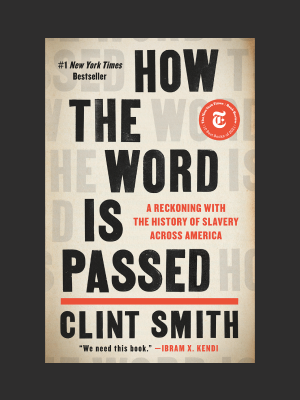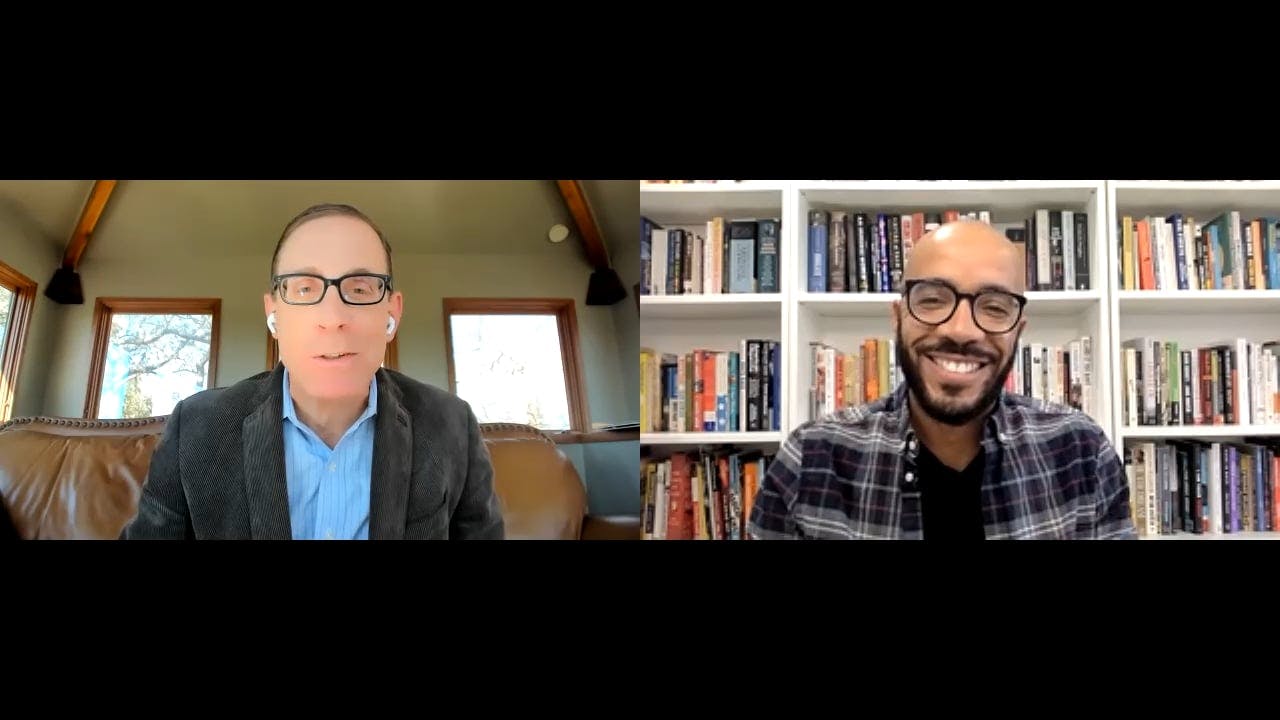
How to tell the truth about our nation’s legacy of slavery
56 min watch

How do we, as individuals and as a society, contend with and remember the darkest periods of our collective past? How do we pay homage to our painful histories? And can public memorials help us heal? These questions—and others that circle the mutable nature of our shared memory—have driven poet and journalist Clint Smith to travel across oceans in search of stories, models, and “emotional underbellies” to deepen our collective perspective and bring necessary nuance to our policies, plans, and politics.
Smith is the author of the book “How the Word Is Passed: A Reckoning with the History of Slavery Across America,” which he worked on during his time as an Emerson Collective Fellow at New America. In 2020, Smith became a staff writer at The Atlantic, where he wrote the December 2022 cover story “Monuments to the Unthinkable.” For that story, Smith traveled to Germany to speak with museum directors, artists, and citizens about how the country memorializes the Holocaust. It is through his rigorous investigative approach and empathic willingness to listen that Smith is able to offer new ways of seeing and approaching our past—and prompt conversation about better ways to design our future. Here, in conversation with Emerson Collective Senior Advisor Evan Smith, he brings those insights to Fellows Friday.
For my book, “How the Word is Passed,” I spent four years researching and traveling across the country and the ocean, trying to understand how different historical sites reckon with, or fail to reckon with, their relationship to the history of slavery. On the book tour, a question that kept coming up was: "The US doesn't do this very well, but what's a place that does? What's a place that is an example that we might be able to aspire to?" In response, I would always reference Germany. But then I thought, "I keep talking about the memorials in Germany and I've never been to the memorials in Germany." My response was based on a distant understanding of the existence of these efforts and having engaged with them intellectually. But I'd never spent any meaningful time there, certainly not in the context of exploring and excavating public memory around the Holocaust. For me—as a journalist, as a scholar, as a writer—it felt unsettling to continue to cite a place, and to continue to cite monuments, that I hadn't necessarily encountered myself.
The Atlantic put the resources behind me, and encouraged me to go to Germany and ask these questions. I spent a week in Berlin and then went again and spent some time in Dachau and Munich to try to understand with more complexity, with more nuance, with more three-dimensional texture, what the conversation about memorialization in Germany looked like, and to get a clearer sense of what we might be able to learn, if anything, from the way that Germany engages with its past.
The stumbling stones are 10 centimeter by 10 centimeter brass stones that are placed into the sidewalks, oftentimes in front of the former residences of people who were persecuted and killed by the Nazis. On the stones, you'll see the birthday, the deportation date and the execution date of the Holocaust victims. They are really striking. You know how old these people were; you can tell who the children were. You can tell who the five-year-old was, who the parents were, who the grandparents were. Then, you look up at the building in front of you—whether it be in an apartment complex or home or synagogue—and it creates this sense of intimacy, in the sense of proximity to that history, that creates a different empathic register. It is, for so many people, an incredibly moving memorial. There are 90,000 of them across 30 different European countries. It's the largest decentralized memorial in the world.
With that said, there are also people who are repulsed by them. One of the leaders of the Jewish community in Munich led an effort to make the stumbling stones illegal to place down in Munich. As this woman would say, "Why would I put the names of Jewish people on the ground where they can be stepped on? Where they can have dirt and mud on them where you can have dog feces on them?" Instead, they have put up plaques at eye level across the city.
It's just another example of the heterogeneity of ideologies. German Jewish people can have very different sets of ideas about what effective remembrance looks like and whether a memorial is doing a service or a disservice to a group of people.
It would, and that's the thing about Germany—the landscape of iconography elicits constant remembrance. I am the descendant of people that were enslaved in Louisiana. I grew up in this city that was at one point the largest, busiest slave market in the country. I could only begin to fathom what it would be like if on the streets of New Orleans they had stumbling stones. If you attempted to remember where enslaved people were held, where they were sold, where they lived, where they worshiped—the entire streets would just be paved in brass.
— Clint Smith"Sometimes, when you ask people questions, it forces a level of reflection within themselves that might be more helpful than any effort to more directly change their minds."
For those who are not familiar, we are talking about the massive 200,000 square foot memorial of over 2,000 stone columns in the very center of Berlin. You are immediately struck by the scale and scope and placement of it, and there are some people who find it incredibly moving and haunting and somber and reflective. There are others who think it's too passive. Why are we saying memorial to the “Murdered Jews of Europe” rather than saying who did the murdering? Why aren’t there inscriptions on the columns to the names of people who were killed?
What you come to realize is that there's not a single answer to this question. Monuments are created for a range of different reasons. Without these monuments, it is unlikely that Germany would be welcomed back into the “chorus of nations,” as they put it. In the same way, they are permanent emblems of contrition that Germany can point to in order to demonstrate that they are not who they once were, and will not again become who they once were.
No monument, no matter how massive, no matter how many square feet, will ever bring back the lives of millions of people. No museum will ever mitigate the injustice that was done to Black Americans or Native Americans, or Jewish people in Germany and throughout Europe. Yet you have to embark upon an effort to create spaces of reflection, because it is that reflection that ultimately prevents people from suggesting that something did not happen or did not happen in the way that the history knows to be true. It is one of many attempts to push back against a collective historical ignorance.
I'm thinking specifically about when I spent the time with the Sons of Confederate veterans and the United Daughters of the Confederacy. I had to understand that if I approached that space with any level of antagonism—attempting to make people look silly or dumb, or go call them racist—I wouldn't learn anything.
I think one of the things you have to do is just ask people questions. Take seriously the human and emotional texture that often undergirds really harmful, violent, or bigoted beliefs. It would be easy for me to have gone in there and turned these folks into caricatures: "The bigotry, they're so racist, they're so evil, can't believe they believe these things." You have to take seriously the familial, the community and emotional underbelly that often serve as the rationale. The only way I was going to understand that was by actually providing space for them to speak to me without feeling judged. Sometimes, when you ask people questions, it forces a level of reflection within themselves that might be more helpful than any effort to more directly change their minds.